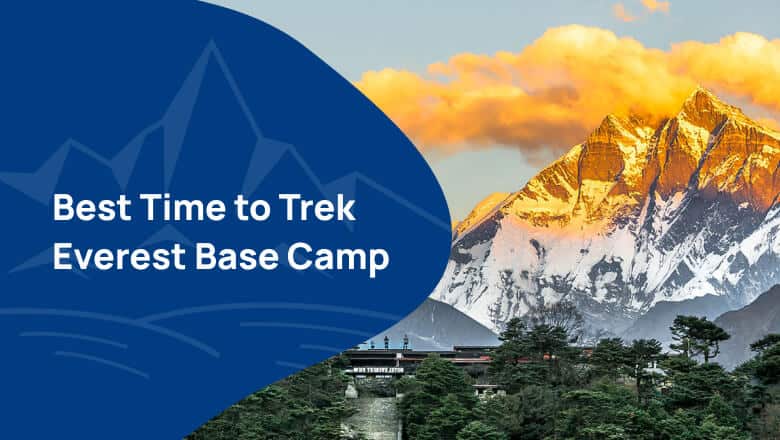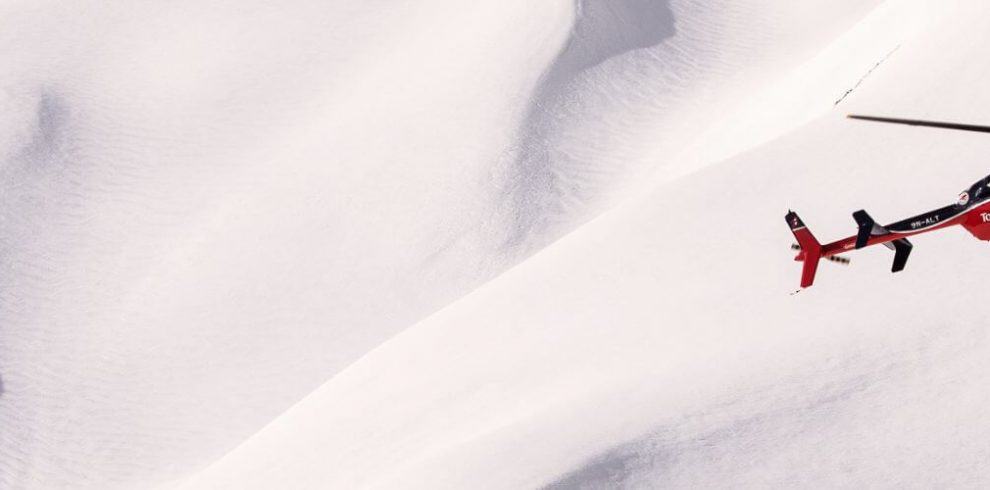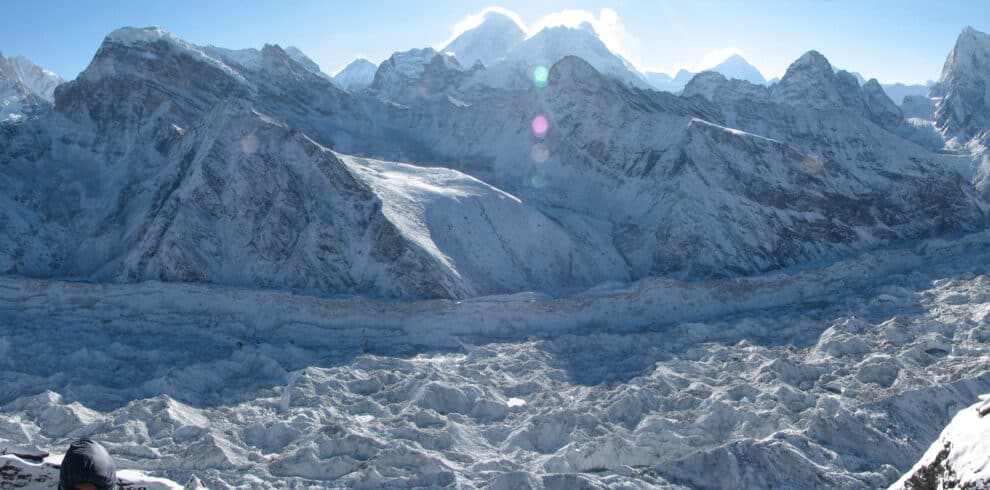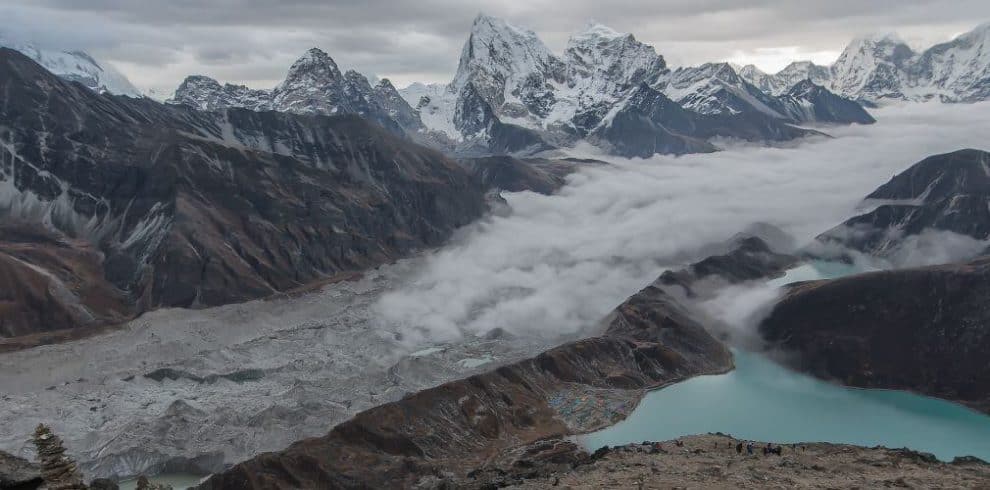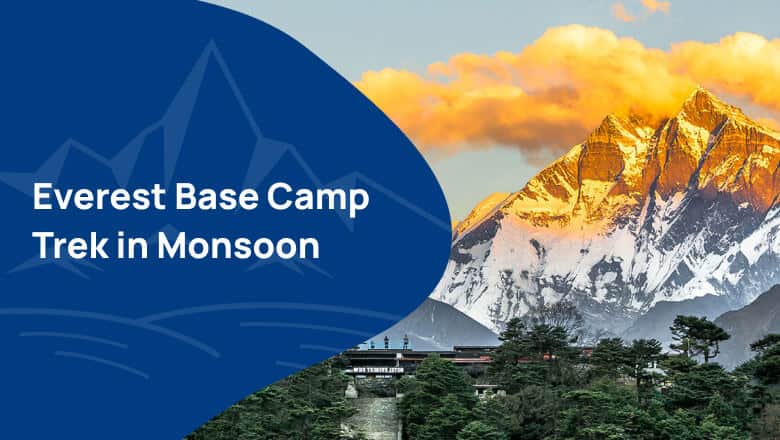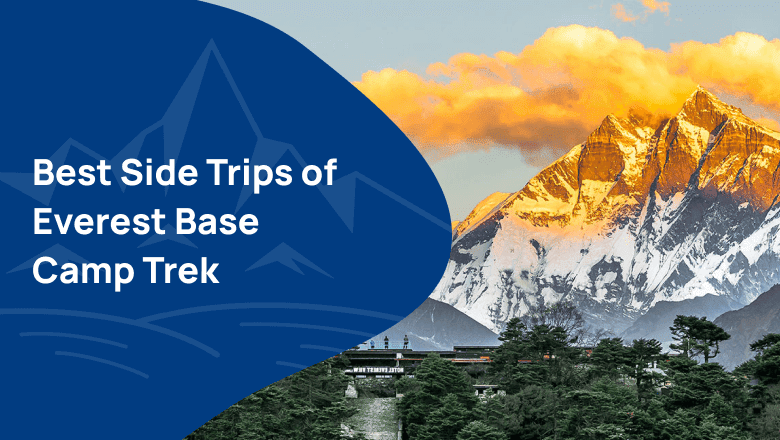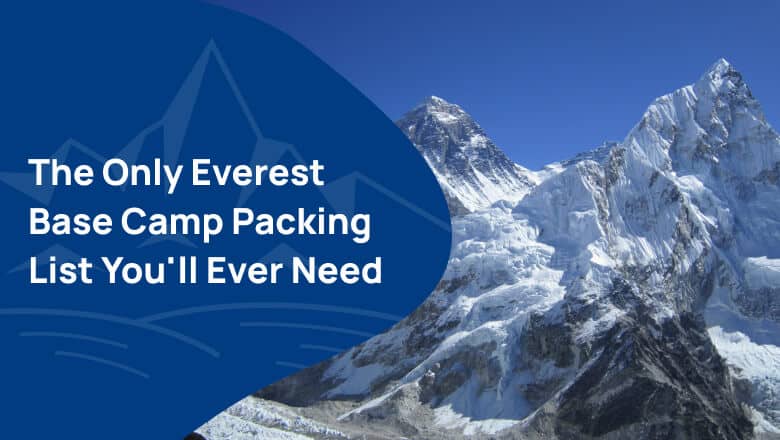Let’s cut straight to the chase – when is the best time to trek to Everest Base Camp? The answer is simple: it’s spring and autumn. More precisely, it’s March to May or mid-September to November.
If you’re new to trekking and want to learn more about the Everest Base Camp trek during different seasons and weather patterns, keep reading this guide.
Now, why should you trust the information I’m sharing in this article? Well, let me introduce myself. I’m Basu Panday. I’ve been in the tourism industry for over 16 years and have had the privilege of leading many groups as a trekking staff and guide. I’ve climbed several trekking peaks in the Himalayas, including over 6,000 meters high.
So whether you’re looking for the best weather conditions for trekking, the clearest views of the peaks, or the least crowded trails, I’ve got you covered in this article.
Before we move on.
Contents
- Temperature and Precipitation in the Everest Region
- Best Season for Everest Base Camp Trek
- Everest Base Camp Trek
- Peak Season Crowds
- Other Factors to Consider
- Conclusion
- FAQs
- Everest Base Camp Trek
- Jiri to Everest Base Camp
- Everest Base Camp Luxury Heli Trek
- Everest Panorama View Trek
- Everest High Passes Trek – 20 Days
Do you have any question about trip to Nepal?
Tell us about your trip to Nepal and what you expect from it. We will answer your questions in 24 hours and help you design a trip with a comfortable itinerary to meet your needs best.
Temperature and Precipitation in the Everest Region
When it comes to trekking in the Everest region, the first crucial information you need to collect is the temperature and precipitation patterns.
The table below gives you a general view of the weather conditions and the crowds in the Everest Region in different months.
| Month | Weather | Minimum Temperature (°F) | Maximum Temperature (°F) | Precipitation (mm) | Wind Speed (miles/hr) | Crowd | Recommendation |
|---|---|---|---|---|---|---|---|
| January | Cold | 17 | 43 | 14 | 7.4 – 11.8 | Very Low | Can Consider |
| February | Cold | 23 | 43 | 20 | 7.4 – 11.8 | Very Low | Can Consider |
| March | Slightly warm | 27 | 44.6 | 30 | 9.3 | Medium | Recommended |
| April | Warm | 36 | 50 | 33 | 8.7 | High | Highly Recommended |
| May | Warm | 44 | 59 | 54 | 9.3 | High | Highly Recommended |
| June | Rainy | 50 | 61 | 135 | 9.9 | Very Low | Not Recommended |
| July | Rainy | 54 | 59 | 285 | 9.9 | Very Low | Not Recommended |
| August | Rainy | 54 | 61 | 277 | 9.9 | Very Low | Not Recommended |
| September | Moderate | 50 | 59 | 155 | 4.9 – 6.8 | Medium | Recommended |
| October | Pleasant | 29 | 58 | 32 | 4.9 – 6.8 | High | Highly Recommended |
| November | Pleasant | 27 | 41 | 7 | 4.9 – 6.8 | High | Highly Recommended |
| December | Start Snowing | 20 | 43 | 14 | 11.8 | Low | Recommended |
Please note that weather conditions vary, and checking the up-to-date weather forecast is always recommended before starting a trek.
Best Season for Everest Base Camp Trek
The four seasons play a significant role in the conditions on the mountain. Each season has its own unique challenges and benefits.
a. Spring (March-May)
This season is the most popular time to trek Everest. During this time, the temperatures are mild, and the sky is generally clear, providing optimal conditions for trekking. This season is also known for having the best visibility, which makes it easier to take in the breathtaking views of the surrounding landscape. Additionally, many support services, including guides, gear, and food, are available. This makes it easier for you to have a safe and enjoyable experience.
However, the high demand for trekking permits during this time means that the Everest Base Camp trekking route can become quite crowded, and you may have to wait in line at some of the popular landmarks. Accommodation can also be harder to find, and prices are higher this month.
If you wish to trek EBC during this season, you can encounter the following events/festivals:
- Ghode Jatra: A Kathmandu-specific festival where the Nepal Army performs horse races at the parade ground (Tundhikhel) to ward off the demon Gurumapa.
- Maha Shivaratri: Particularly lively at Kathmandu’s Pashupatinath Temple, where thousands of sadhus (Hindu holy men) gather to worship Lord Shiva.
- Holi: The festival of spring, where water and coloured powders are thrown around in celebration.
- Mani Rimdu festival- A 19-day festival celebrated by Buddhists in the Everest region of Nepal to mark the founding of Buddhism by Guru Rinpoche Padmasambhava.
- Tenzing Hillary Everest Marathon: The World’s Highest Marathon.
b. Monsoon (June-Aug)
Monsoon season is typically not considered the best time for trekking Everest. It is because the region experiences heavy rainfall from June to August, making the trails muddy and difficult to navigate. The monsoon season also brings the risk of landslides and floods, which can be dangerous for you.
Moreover, during this season, the mountain peaks are often obscured by thick clouds, making it difficult to enjoy the views of the Himalayas. The humidity levels are also high, leading to discomfort and an increased risk of dehydration.
Though I don’t recommend many people to trek during this season, the monsoon season can still be a viable option for trekkers looking for a less crowded experience, as most visitors prefer to trek during spring and autumn. Additionally, the monsoon season can be a good time to visit the lower elevations of the region, where the weather is still pleasant, and the vegetation is lush and vibrant.
.
Book an Everest Base Camp Trek Now!
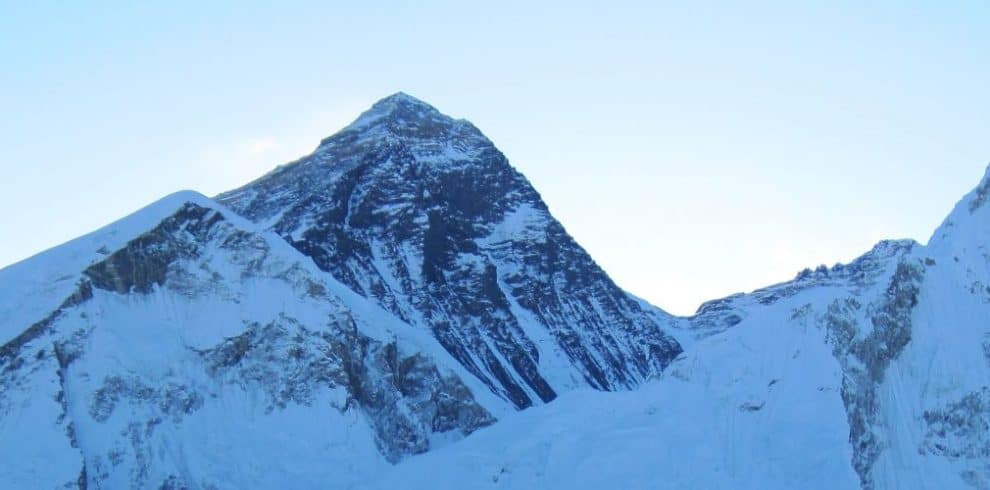
Everest Base Camp Trek is a classic trekking adventure in the foothills of the world’s highest mountain, Mount Everest. Trudging along the rugged trails of the Himalayas, decorated with mountains and landscapes, this trek is undoubtedly one of the best walks on earth. Regarded as the most popular trek in Nepal, Everest Base Camp Trek extends for…
c. Autumn (Sept-Oct)
This season is also an ideal time for trekking at Everest Base Camp. During this time, the monsoon season has ended, so the skies are generally clear, providing good visibility and pleasant weather conditions. This season is also characterized by stable temperatures, which make it easier to acclimate to the high altitudes encountered during the trek. The trails are also well-maintained, and the risk of landslides and rockfalls is low, making the trek safe and easier to navigate the paths.
However, with the ideal weather conditions comes the crowds. Autumn is the busiest season for trekking in the region, making it hard for you to find accommodation. Therefore, book your trek in advance to ensure a smooth journey.
Another important note is that flights from Kathmandu to Lukla in October and November fill up way ahead of time, so make travel bookings as early as possible.
If you wish to trek EBC during this season, you can encounter the following events/festivals:
- Dashain: One of the biggest and most important festivals celebrated by the Hindus of Nepal for 15 days.
- Tihar: Tihar, also known as Deepawali, is another biggest festival of Hindus after Dashain
d. Winter (Nov-Jan)
Winter is another season that I don’t recommend for you to trek to Everest Base Camp. The region experiences freezing temperatures and heavy snowfall from November to January, making the trails extremely challenging and risky. The cold weather can also increase the risk of hypothermia and frostbite, especially at higher altitudes.
During winter, many tea houses and lodges along the trails are also closed, making it difficult to find accommodation and food. In addition, the days are shorter, and the nights are longer, which limits the amount of time you have to trek each day.
However, for experienced trekkers trekking to EBC in winter is still doable. If you are a risk taker and trekking this season, I recommend you be well-prepared and have proper gear, including warm clothing, sleeping bags, and boots. In addition, unless you’re Bear Grylls, I recommend you have an experienced guide to help navigate the trails safely.
If you’re planning to go on the Everest Base Camp Trek but want to know more about it first, we have a detailed Everest Trekking guide that can help. It has all the information you need to know before you start your journey. Check it out and learn from our expertise to make your trip a success.
Peak Season Crowds
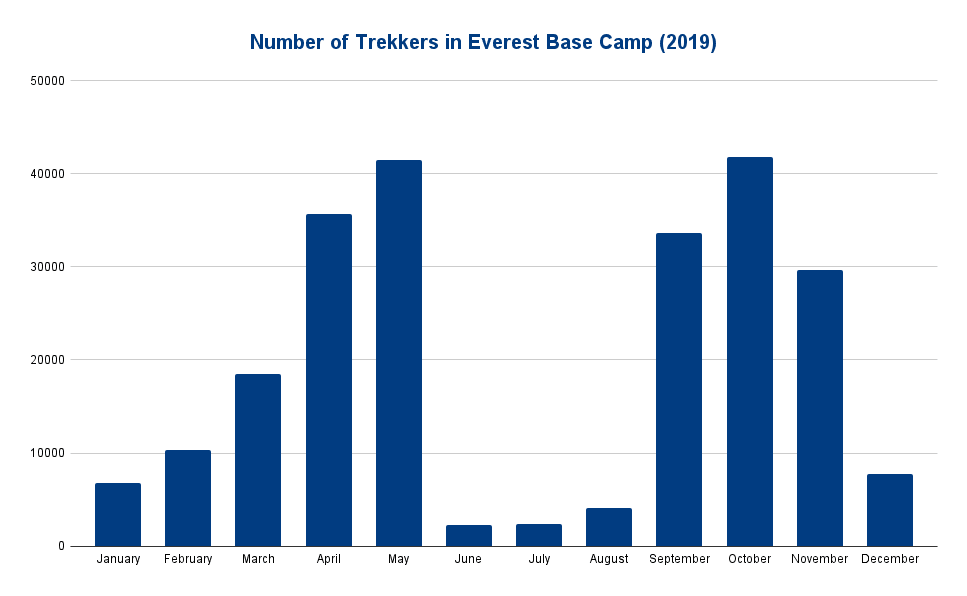
When planning your trek to Everest Base Camp, it’s essential to know how many people you’ll encounter on the trail. Avoiding the peak seasons is best if you prefer a peaceful and serene trekking experience.
Spring and autumn are the peak seasons to trek Everest Base Camp, so the trails can get quite crowded, and the lodges may be overcrowded too.
However, outside of these peak seasons, the region is relatively uncrowded, giving you more space to enjoy the area’s natural beauty.
Other Factors to Consider
Besides weather conditions and peak season, you may also need to encounter a few other factors to consider when choosing the best time to trek to Everest Base Camp. Here are some additional points to keep in mind:
- Altitude sickness: Trekking at the high altitude of the Everest region can be tough on your body and cause altitude sickness, which can be really dangerous. Ensure you know the risks and take the necessary precautions to avoid them.
- Physical condition: The trek to Everest is physically demanding, so it’s essential to ensure you’re in good shape before you start. You should also consider the time of year and the weather conditions, as these can affect the trek’s difficulty.
- Cost: The cost of trekking to Everest Base Camp can vary depending on the time of year, with prices generally being higher during the peak trekking season.
Conclusion
In conclusion, considering all the factors, choosing the best time to trek to Everest Base Camp is crucial. The weather conditions, temperature, precipitation, and crowds can all affect your trekking experience.
The best seasons for trekking to Everest Base Camp are spring (March to May) and autumn (September to November). You can expect clear skies, mild temperatures, and low precipitation levels during these months. However, be prepared for some crowds during these peak seasons.
Besides this, it’s also essential to consider other factors, such as altitude sickness, physical condition, and budget.
Ultimately, the best time to trek Everest Base Camp depends on your preferences and priorities. If you prefer a quieter trekking experience, consider going during the off-peak seasons(only for experienced trekkers; I don’t recommend it). On the other hand, spring and autumn are great options if you prioritize good weather and don’t mind the crowds.
I hope this article has provided you with useful information and insights to help you plan your journey. Remember, the key to a successful trek is preparation and proper planning.
FAQs
What are the weather and temperature conditions in September?
In September, the temperature at Everest Base Camp ranges from around 10-15°C (50-59°F) during the day and drops to around 0°C (32°F) at night. The clear skies provide panoramic views of the surrounding mountains, and the winds are relatively calm.
Why is September considered a good time to trek to Everest Base Camp?
September is considered a good time to trek to Everest Base Camp because of the stable weather conditions and clear skies. The mild temperature makes it easier for trekkers to acclimate to the high altitude. Additionally, the crowds from the spring season have dissipated, making it a quieter time to visit.
Which is the coldest month on Mount Everest?
The average temperature on Mount Everest ranges from -19°C (-2°F) to -33°C (-27°F), depending on the altitude. The higher you go, the colder it gets.
Our Everest Base Camp Packages
Everest Base Camp Trek is a classic trekking adventure in the foothills of the world’s highest mountain, Mount Everest. Trudging…
The majority of people keen on trekking who visit Nepal who want to soak in the Everest experience choose the…
The Everest Base Camp luxury heli Trek is designed for people who are short on time but still want to…
The Everest View Trek is a short trekking alternative in the Everest region. It offers stunning views of the world's…
Everest High Passes Trek, also known as the Everest Circuit Trek, is one of the most comprehensive adventures in the…

